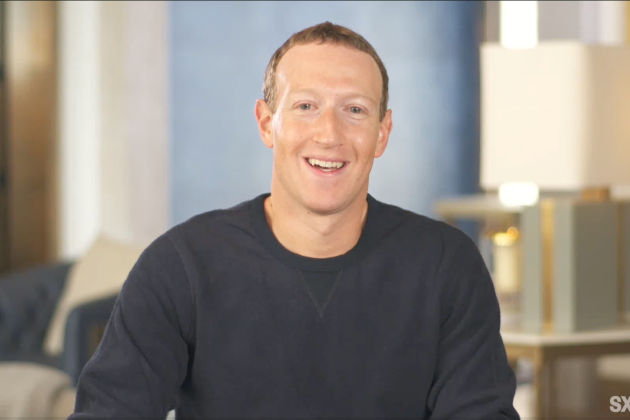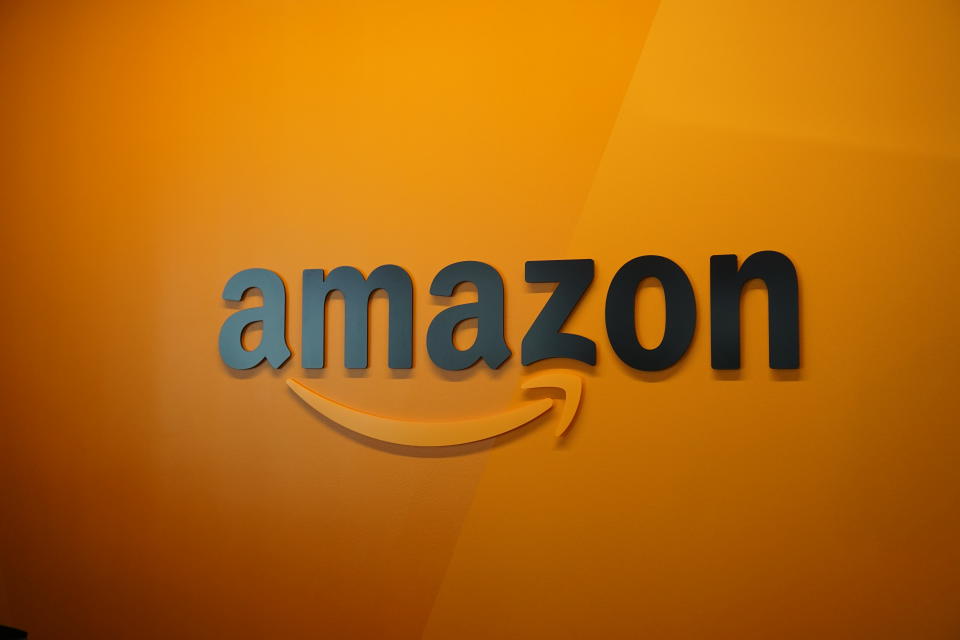Big Tech Is Back (Maybe) With a Big AI Bet (Definitely)

Big Tech is back — or at least finally clawing its way back from the brink, with a decisive break in a chain of disappointments.
For several quarters now, the top names in tech blamed the economy, supply chain challenges, inflation and more for its woes. Many of those factors are still in play, and yet Google, Meta and Amazon finally managed to beat the estimates in their latest earnings results, as reported over the past week.
More from WWD
The performance matters, because it sets the stage for a new phase, if not for development, then at least priorities. Because artificial intelligence helped power the turnaround faster than even analysts could predict. The numbers set the stage.
Google parent company Alphabet’s first quarter pulled in revenue of $69.8 billion, beating projections of $68.9 billion by nearly a billion dollars. Handwringing over Meta’s revenue decline throughout 2022 gave way to high fives on Wall Street, as the Facebook and Instagram company showed growth for the first time in nearly a year. Revenue of $28.7 billion amounted to 3 percent growth, a modest uptick for Meta just a few years ago. But in the present, it was enough to surpass the $27.7 billion pegged by analysts and catapult the company to a new 52-week high.
Then Amazon swept in with $127.4 billion in revenue, with 9 percent growth, beating its own guidance and outside estimates. The report seemingly cemented Big Tech’s comeback — or so it seemed, at least briefly. Shares popped above 10 percent initially, then slid as Amazon chief financial officer Brian Olsavsky explained on an earnings call that, because Amazon Web Services’ customers are still optimizing their spending, he expects a slowdown in growth for the cloud business. Cue the nerves.

As far as the retail business goes, the company showed strength in its physical stores, which grew 7 percent, though online revenue was flat. But its third-party seller services jumped 18 percent and subscriptions grew 15 percent.
Not all tech companies had a winning week, however. Snap Inc. had a rough first quarter, with $989 million in revenue showing a decrease of 7 percent and missing estimates of $1 billion. The stock tumbled as much as 20 percent in after-hours trading Thursday and failed to recover on Friday.
Now all eyes are on Apple, which reports on Thursday.
So far, the special guest star in each of these results has been artificial intelligence. Each tech titan touted the strength of its AI chops to anchor future plans — and retail, it turns out, is a major destination for their algorithms.
At Google, this strikes multiple parts of its vast operation.
According to Philipp Schindler, chief business officer and senior vice president, “making Google a core part of shopping journeys for consumers and a valuable place for merchants to connect with users” is one of its core “pillars.”

One way it aims to do that is to focus on the interplay between local and omnichannel retail, as offline and online extensions of a merchant’s business. Google sees AI as the bridge between them “to reach nearby shoppers, promote local inventory, optimize in store visits and sales, for example,” he said. It’s part of a Google-verse that also spans YouTube app deep linking and PMAX, short for Performance Max, its intelligence-driven ad campaign type that lets advertisers tap all of their Google Ads inventory from a unified place.
AI fuels PMAX to help brands with ad-targeting — a key aspect, as Apple and Google have been systematically dismantling older, privacy-skirting tactics like user-tracking and cookies. Google’s AI powers bidding, creative and search query matching, and newer formats like YouTube Shorts, according to the company’s ad blog.
The result: PMAX drove a massive 46 percent surge in revenue and a 31 percent jump in return on ad spend, the company reported, leading to its best business day in history and a robust reinvestment in its AI-first strategy for the first quarter. It goes beyond e-commerce, to store sales reporting and bidding and using PMAX for store goals.
On a related, but separate note, Google also big plans for YouTube. It’s already a powerhouse of video product reviews, demos and tutorials and, on its own, it’s a firehose of data about people’s interests. So naturally, Google intends to make it more shoppable. It’s already laid the groundwork, allowing creators to connect stores via partners like Shopify to their YouTube channels. To date, more than 100,000 creators and brands have done so.
For Amazon, AI is obviously at the top of the priority list, as the ink on chief executive officer Andy Jassy’s latest letter to shareholders about investments there isn’t even dry yet.
RELATED: Amazon’s Cost Cutting-fueled Comeback Is Underway
The company points its algorithms at consumer behaviors to target ads, and the result is impressive: Amazon’s ad business has practically doubled in just two years, going from $19.8 billion to $37.7 billion last year. Its latest first quarter just edged out its previous first quarter, with $9.5 billion versus $7.9 billion, so if the trajectory holds, 2023 will be its best year yet for ads. That’s the benefit of owning both the shopping and ad platforms, especially across a vast empire.
“Our advertising business continues to deliver robust growth, largely due to our ongoing machine learning investments that help customers see relevant information when they engage with us, which in turn delivers unusually strong results for brands,” Jassy said in a statement.
It’s notable that Amazon’s advertising business is growing, while its cloud business is slowing.
Brands and merchants will often access AI tools and insights through groups like AWS, Google Cloud and Microsoft’s Azure. All three are racing to prioritize AI development, but they’re approaching it from different vantage points: While Google Cloud charted its very first profit, at $191 million, and Microsoft reported Azure revenue grew more than 30 percent, AWS reported 16 percent growth, a significant decrease from 37 percent in the year-ago quarter. That’s not as bad as analysts feared, and it’s still nearly 17 percent of Amazon’s total revenue. But it’s not the momentum Amazon wants.
Even so, the company is doubling down on AI, even expanding access to custom-built processors capable of powering the tech more efficiently. It intends to keep investing in AI and ML, as a cornerstone of its consumer, seller and creator experiences, Jassy told shareholders.
Meta is also pursuing AI, though it makes clear that it isn’t abandoning the metaverse for it. CEO Mark Zuckerberg still believes in the connected virtual world. But it’s a long game, and in the near term, he appears to have woken up to the actual reality that, in order to get there, the business has to stay afloat.
It’s a sobering scenario. The Reality Labs division, which runs Meta’s metaverse projects, lost nearly $4 billion in the quarter. Add that to the tab, as it racked up $13.7 billion in losses last year.
The company appears to see its lifeline in Reels, its short video format, and it’s making AI foundational to that.
“Since we launched Reels, AI recommendations have driven a more than 24 percent increase in time spent on Instagram,” he said. “Our AI work is also improving monetization. Reels monetization efficiency is up over 30 percent on Instagram and over 40 percent on Facebook quarter-over-quarter. Daily revenue from Advantage+ shopping campaigns is up seven times in the last six months.”
That artificial intelligence or machine learning, advertising and shopping would overlap was, perhaps, predictable. But what has blown everyone away is the pace at which it’s happening. That’s one thing the metaverse, which will take years if not a decade to mature, simply can’t match. Although, as Zuckerberg pointed out, VR and AR technology can involve AI too.
Of course, that’s not the only thing tech giants have in common. To stanch the financial bleed, they’ve enacted massive rounds of layoffs, cutting loose tens of thousands of workers. Smart brands may zero in on the record numbers of tech talent suddenly available. But for the most part, those professionals weren’t cut from the data science teams.
Not that AI is a magical incantation guaranteed to conjure success. Snap learned that firsthand.
When it launched its OpenAI-powered My AI chatbot, users deluged the app’s page with negative reviews. However, the company remains undeterred, and it plans to debut a generative AI feature that can create an image based on a user’s conversation with the bot. This joins new augmented reality initiatives, including the recently unveiled enterprise service ARES; a new apparel try-on feature that can take a standard photo and automatically create a 3D AR lens, and an AR mirror that brands can bring to their stores. But much of that is powered in varying degrees by AI as well.
The tech has broad applicability, perhaps as varied as the nature of data itself, and that means it can — and already is — showing up in a multitude of scenarios. As it is, AI seems to be resuscitating online advertising, and at a pivotal time for the tech giants. This is proving consequential for today’s retail sector. Imagine what tomorrow will bring. Because these platforms already are.
Best of WWD

